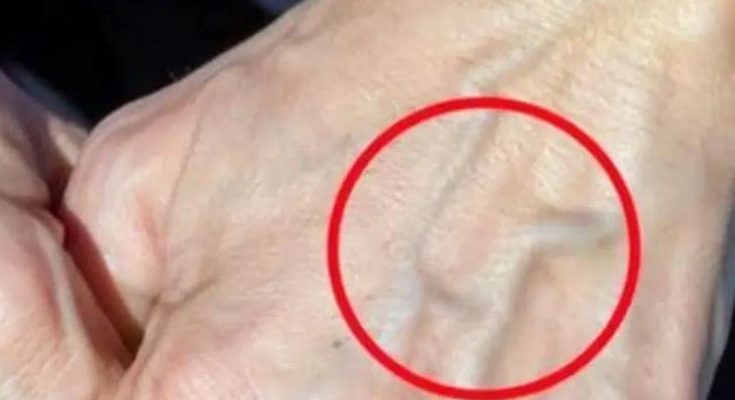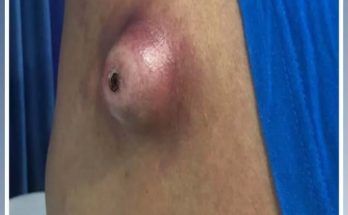In recent years, many people have noticed an interesting—and sometimes startling—change in their bodies: the sudden appearance of prominent veins on their hands, arms, legs, or even their chest that they don’t recall seeing before. It’s a phenomenon that can evoke curiosity, concern, or even anxiety, especially if the veins seem to emerge suddenly or become more pronounced over a short period. While for most, these visible veins are harmless and a natural part of aging or physical activity, in some instances, they can be a sign of underlying health issues that should not be dismissed. Understanding the reasons behind these changes can help individuals assess whether their body is signaling something more serious or simply reflecting normal physiological processes.
A widely accepted cause for the appearance of new or more prominent veins is weight loss or a reduction in body fat. When you shed excess fat—whether through dieting, increased activity, or natural aging—the layer of fat that usually covers and conceals blood vessels becomes much thinner. This decrease in subcutaneous fat makes the networks of superficial veins more visible, especially in areas like the limbs and torso. Athletes or those on a fitness journey often notice “vascularity”—that impressive vascular appearance—during their workouts because their body fat percentage has decreased significantly. For others, it might simply be an indication of the natural aging process when body fat gradually diminishes, revealing what was once hidden.
Another significant factor influencing the visibility of veins is physical activity, especially strength training and weight lifting. When you engage in intense exercise, your muscles demand increased blood flow to supply oxygen and nutrients while removing waste products. This extra blood flow causes veins to swell temporarily, making them stand out more than usual. Over time, as muscles grow stronger and larger with consistent training, they push veins closer to the skin surface. This hypervascular appearance is often seen as a sign of good physical conditioning, but it also signals increased blood circulation and vascular health. However, in some cases, overly pronounced veins could be related to medical issues such as high blood pressure or vascular malformations that require medical evaluation.
Temperature fluctuations also play a role in whether veins become more visible temporarily. During hot weather, veins tend to dilate—meaning they widen—to help cool the body through increased blood flow near the skin’s surface. This process, known as vasodilation, is a normal physiological response to heat. When the body’s temperature drops or when you go into a cooler environment, these veins typically contract and become less noticeable. Therefore, a hot day or post-exercise heat can temporarily cause veins to appear more prominent, especially in the limbs and face. This is simply the body’s natural way of managing heat, and it usually resolves once you cool down.
As we age, our skin undergoes natural changes that impact how visible veins are. Over time, skin loses its elasticity and becomes thinner due to decreased collagen production. This thinning skin reduces the barrier between the veins and the surface, making the blood vessels more apparent. It’s a normal part of the aging process, and many older adults notice an increase in visible veins as their skin becomes less firm. While this is generally harmless, it can sometimes indicate more serious conditions like varicose veins or venous insufficiency—issues related to blood flow that may require medical attention if they cause discomfort or swelling.
Hormonal changes also influence the size and appearance of veins. During pregnancy, menopause, or when undergoing hormone therapy, fluctuations in hormones such as estrogen and progesterone can cause blood vessels to dilate or become more prominent. During pregnancy, increased blood volume and pressure in the veins can cause them to appear more noticeable, especially in the legs. Similarly, menopause can weaken vessel walls, making veins more visible and sometimes leading to conditions like spider veins or varicose veins. These changes reflect normal physiological adaptations but can be exacerbated by other health factors.
It’s important to recognize that while many of these causes are benign, some visible veins can be an indicator of health problems that warrant medical evaluation. For example, chronic venous insufficiency, blood clots, or vascular malformations can cause veins to enlarge and appear more prominent, and they may be associated with symptoms such as pain, swelling, discoloration, or tenderness. If the appearance of veins happens suddenly, is accompanied by pain or swelling, or worsens over time, it’s advisable to consult a healthcare professional to rule out any underlying vascular or circulatory issues.
In assessing whether new visible veins are a cause for concern or simply a sign of normal aging or fitness, lifestyle factors are key. Maintaining a healthy weight, engaging in regular exercise, especially cardio and strength training, and managing health conditions such as high blood pressure can all influence vascular health. Wearing compression stockings or avoiding prolonged periods of standing or sitting can also improve circulation and reduce the prominence of problematic veins. Proper hydration, a nutritious diet, and avoiding excessive sun exposure are additional measures that support healthy skin and blood vessels.
In conclusion, the sudden appearance of prominent veins can be a natural part of aging, physical activity, temperature changes, or hormonal fluctuations. While often harmless



